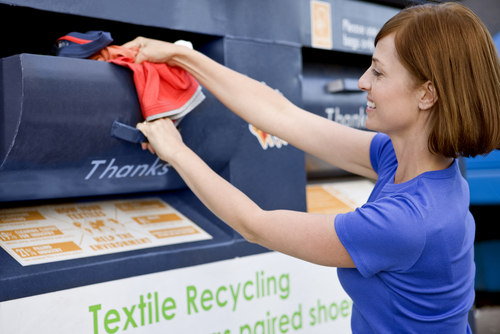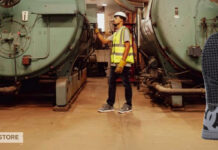What did you do with that favorite pair of jeans you wore out last year?
If you are like most Americans, you probably threw them in the trash. According to the EPA, as reported by Newsweek in 2016, about 84% of unwanted clothing was sent to a landfill or burned. That’s about 14 million tons of discarded clothing, and it amounts to about 80 pounds per person.
 That’s a lot of waste, and it comes with profound consequences because the fabrics, even those made with natural fibers, can contain toxins. Those toxins can end up in the air when clothing is burned and in groundwater when clothing is discarded in improperly-sealed landfills. Not to mention the space those millions of tons take up in landfills.
That’s a lot of waste, and it comes with profound consequences because the fabrics, even those made with natural fibers, can contain toxins. Those toxins can end up in the air when clothing is burned and in groundwater when clothing is discarded in improperly-sealed landfills. Not to mention the space those millions of tons take up in landfills.
The good news is, all that waste and pollution is unnecessary. With a little knowledge, we can keep almost all our unwanted clothing out of landfills.
Here are some easy ways each of us can reduce the amount of clothing we discard.
1. Purchase Quality Clothing That Lasts. People today buy more clothing than ever before, almost 80 billion pounds worldwide. And “fast fashion” — cheap clothing intended to be worn for short periods of time, then discarded creates significant environmental and social justice issues.
If you are already purchasing quality workwear that is intended to hold up to wear and tear (like clothing offered at Working Person’s Store), you are well on your way to being part of the solution. It’s good for the environment, good for society, and good for your wallet.
2. Donate Clothing for Charitable Redistribution. Many local, national, and global charities will take clothing and either sell it in their thrift stores or give it to people who need it. Goodwill and the Salvation Army are two well-known examples, but there are plenty of others, too.
How do you find them? Search online or check with local social service agencies and churches. For some charities and causes, you may not have heard of, check out this AARP article; it lists charities that accept shoes and clothing (plus plenty of other items). This Huffington Post article offers options, too.
 Be Careful: When selecting a recipient for your donation, find out what happens to your donation if the charity can’t use it. Ask what the charity does with donations that don’t meet its acceptance criteria. You don’t want unwearable items ending up in a landfill. If that is the case, make sure that you only donate clothing that meets their criteria – and find another source (besides the trash) for the rest. Read on for options!
Be Careful: When selecting a recipient for your donation, find out what happens to your donation if the charity can’t use it. Ask what the charity does with donations that don’t meet its acceptance criteria. You don’t want unwearable items ending up in a landfill. If that is the case, make sure that you only donate clothing that meets their criteria – and find another source (besides the trash) for the rest. Read on for options!
3. Repurpose, Recycle, Upcycle. Putting old clothing to new uses can significantly reduce the amount of clothing that enters the waste stream. The terms repurpose, recycle, and upcycle are often used interchangeably, and they reflect the many ways we can keep textiles out of the landfill. For example, an old shirt can be repurposed into wiping cloths. Or perhaps it can be completely recycled, its fibers salvaged and used to create a different object. Or perhaps it can be upcycled, which often refers to using old and worn items to a new, useful object. Examples include taking pieces of cloth from old garments and using them to create handbags. Think about it, beautiful handmade quilts are often works of art comprised of upcycled clothing scraps.
While we can all do our part on a small scale to repurpose and upcycle our own items of clothing, there are plenty of organizations and businesses that will take your old clothing and textiles and repurpose, recycle, or upcycle them on a larger scale.
You can find these companies much like you find recipients for charitable donations. In fact, while we tend to think that all our donated items are given away or sold in thrift stores, much of what we donate is actually sold to salvage companies for other purposes such as recycling and for shipment overseas where there is a large market for used clothing.
There are plenty of online resources with tools that let you search for recyclers for all kinds of materials. For example, at Earth911.com and RecyleNation.com you just enter the type of material and your zip code into the tool and are served a list of recyclers in your area. Many municipalities and educational institutions have search tools, too.
With the right information and just a little effort, we can divert most of our old and unwanted clothing from the landfill. Here are the keys:
1. Buy what you need and buy clothing that will last instead of cheap items that are, in practice, disposable.
2. Donate usable clothing that will be given away or sold inexpensively.
3. Donate the rest to outlets that will repurpose, recycle or upcycle it.




